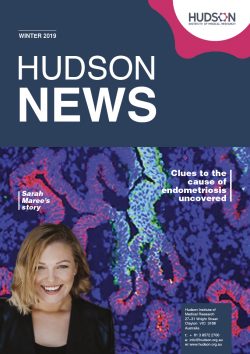Cell therapy leader Associate Professor Rebecca Lim’s incredible work is putting Melbourne on the map as a leading research hub. She has been ranked among Australia’s top scientists in the National Health and Medical Research Council’s Research Excellence Awards.
A/Prof Lim has dedicated more than 10 years to understanding how stem cells from the amniotic sac could reverse the downward spiral of life-threatening diseases. Now she has translated her breakthrough scientific findings into world-first clinical trials to help extremely sick babies and acute stroke patients.
What difference has your research made to the health of Australians?
For over a decade, I have dedicated my research to understanding how stem cells from the amniotic sac, which surrounds the baby during pregnancy, could alter the progression of life-threatening diseases.
I developed a method for producing these stem cells that complied with national regulatory standards and could be used in patients. Now, my research has brought world-first cell therapy to extremely premature babies with severe lung disease and acute stroke patients.
Describe a turning point or defining moment in your research career.
I still get goose bumps thinking about it. The day when I discovered that the amniotic stem cells release tiny nanoparticles of biological material that mimic the actions of the parent cell. I double-checked the data. I asked another scientist in our team to repeat the experiment. I gave a sample of these nanoparticles to a colleague to test. When I discovered that the observation was real and reproducible in the hands of multiple scientists, I just about cried. Here was a ‘eureka moment’ in its true essence.
What excites you about your research?
The potential to improve the lives of patients suffering from debilitating diseases. We are continually exploring the boundaries of cell therapies and improving our understanding on the way they work and how we can provide safe and effective treatments for patients.
Amniotic stem cells offer the simplest of treatments – they don’t need to be matched to the patient’s blood type or tissue type, and can be delivered by the simple procedure of an intravenous line, taking about an hour.
How do you see your research impacting the field?
For a long time, Australians have struggled to access approved cell therapy clinical trials. As stem cell researchers continue to develop cell therapies for serious diseases, access to approved treatments will grow. And, conversely, by progressing the science of stem cell treatments I hope there will be a reduction in Australians seeking potentially dangerous, unapproved therapies overseas and falling victim to stem cell tourism.
What are the next steps?
The high cost and labour-intensive manufacture of cell therapies mean few patients have benefited from cell therapies. Breaking down these barriers with technology that reduces manufacturing costs will mean that more patients will be able to access the benefits of cell therapies. That will be a game-changer for patient health.
How is your work putting Australia on the map?
One of the first things we hear from our colleagues in Europe and North America, when we present our findings, is “Wow! Never heard of that before, where are you from?” This work is putting Melbourne and Australia on the map as a leading research hub for stem cell research.
WHAT ARE AMNION EPITHELIAL CELLS?
An amniotic epithelial cell is a stemlike cell extracted from the lining of the inner membrane of the placenta. They have the ability to grow into any cell in the body, in a similar way to stem cells. Each placenta produces about 150-200 million amnion cells.
WHAT ARE CELL THERAPIES?
Cell therapies are an emerging medical treatment that uses living cells to treat a range of diseases. They aim to replace or regrow diseased or dysfunctional cells with healthy, functioning ones. Examples include whole blood transfusions, cancer immunotherapies and stem cell therapies.
The oldest form of cell therapy is bone marrow transplantation, where living blood stem cells are given to patients to treat diseases such as cancer.
Regenerative medicine uses technologies such as cell therapies, biomaterials and/or drugs to help damaged organs or tissues to repair. This can include bioengineered bone grafts impregnated with growth factors (naturally occurring substances like proteins and hormones) to speed up repair.

